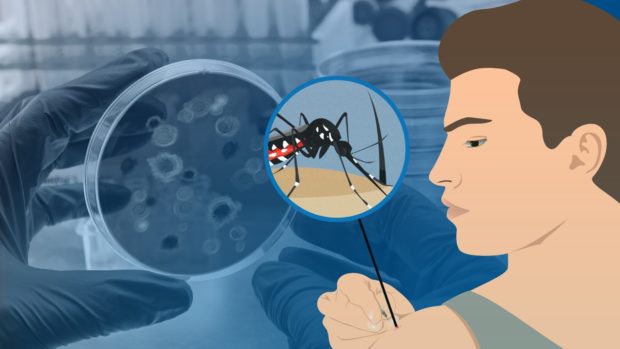Dengue cases up in Eastern Visayas due to nonstop rains
TACLOBAN CITY, Leyte, Philippines — Cases of dengue fever in Eastern Visayas have increased as rains brought by a shear line have been affecting the region since December 2022.
The Department of Health (DOH) has asked the local governments in the region to be alert and observe all preventive measures to control the rise of dengue cases.
Based on DOH data, the region recorded 210 dengue cases in January 2023, or 19 percent higher compared to the 176 cases in January 2022.
“We have issued a health advisory to all local government units (LGUs) on [waterborne] diseases [that may occur because of the weather],” said Jelyn Malibago, regional DOH information officer, in a Jan. 30 interview.
Aside from dengue, the DOH also logged other cases of waterborne diseases in the region.
Article continues after this advertisementIn 2022, the region had 111 cases of leptospirosis with 13 deaths; 5,862 suspected cholera with 44 deaths; and 9,009 cases of influenza with 25 fatalities.
Article continues after this advertisementDengue cases in Eastern Visayas in 2022 reached 6,794, or an increase of 774 percent compared to the 877 cases in 2021, the DOH said.
At least 20 people in the region died of the mosquito-borne disease in 2022 compared to none in 2021.
Advisory
At the start of 2023, the health department attributed the surge in dengue cases in Eastern Visayas to incessant rain caused by the low pressure area or by the shear line, the weather system that forms when cold and hot winds merge, that has been prevailing over the region, southern Luzon and many parts of Mindanao.
Since Eastern Visayas continues to experience incessant rain, the DOH said it expected an increase in dengue cases as well as other waterborne diseases like cholera, leptospirosis, and influenza-like ailment.
“In this regard, the DOH is urging the public and all the LGUs to observe the measures within their premises to mitigate the surge in dengue cases and deaths this year,” read the health department’s advisory on Jan. 30.
The local governments were directed by the DOH to conduct daily “search and destroy” activities of mosquito breeding sites; check and clean containers or water deposits for the presence of the Aedes mosquito larvae (locally known as kiti-kiti) and pupae; conduct barangay dengue brigade and organize a weekly simultaneous search and destroy activities to reduce the risk of dengue transmission and increase awareness; and conduct fogging or spraying operations for four consecutive weeks.
The DOH also requested people in the region to seek early consultation for suspected dengue cases, especially those with abdominal pain, bleeding, frequent vomiting, lethargy, and restlessness.
Dengue is an infection caused by the Aedes aegypti mosquito and has no known cure. The infection triggers a severe flu-like illness often followed by a severe drop in an infected person’s platelet count.
Among other symptoms are severe headache, pain behind the eyes, full-body aches, nausea, vomiting, swollen glands or rashes.
